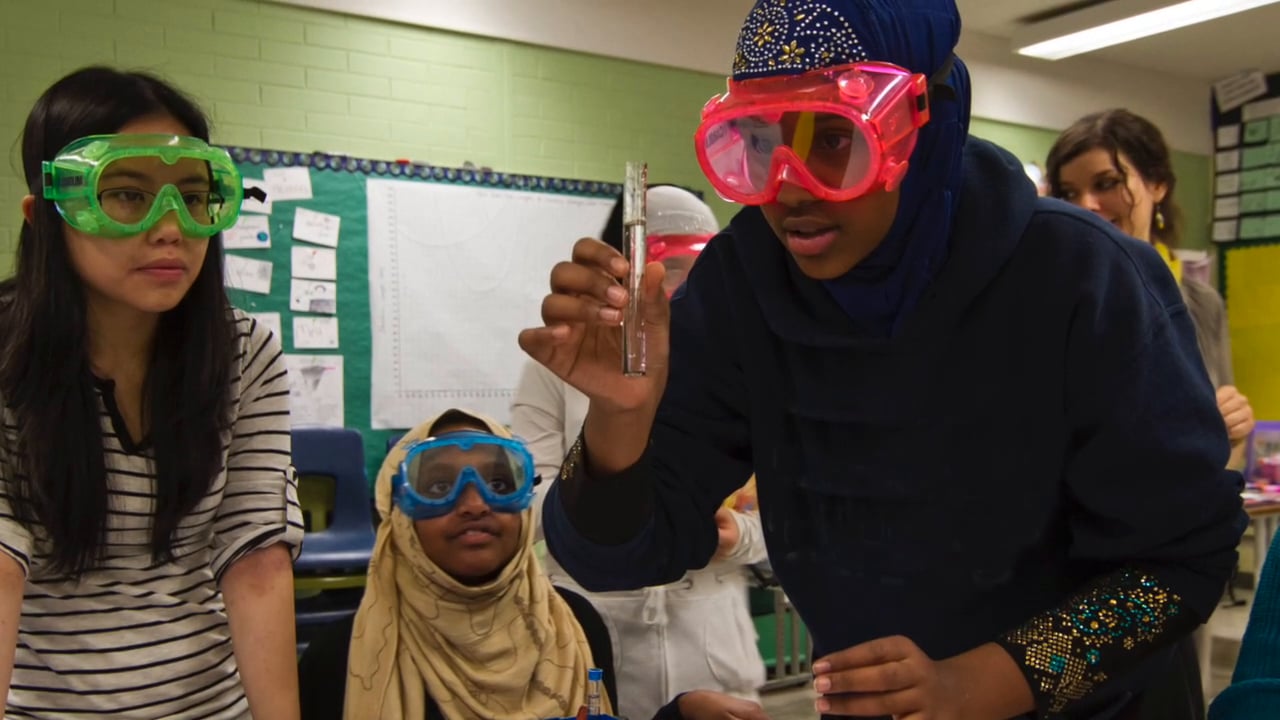
This is the introductory series of videos for anyone interested in learning about ambitious teaching. We highly recommend starting here before diving into any of the full length series of individual teachers and their students. This introductory series begins with an overview, followed by videos that show key features of each of the four sets of teaching practices. We also recommend that you check out our “How do I” page that has guides for everything from generating the kinds of classroom discourse you see here to designing group work to engaging students in scientific modeling and arguing with evidence.
An Overview
In the video below we provide an overview of what you would see if you visited classrooms where ambitious science teaching was the norm.
Planning for engagement with important science Ideas
These are planning practices for designing a unit of instruction.
Here we show the first of our core sets of practices. These are planning practices for designing a unit of instruction. Important ideas in science are about the relationships between a natural phenomenon and a causal explanation that helps us understand why something in the world unfolds they way it does (phenomena are events or processes— things that happen). Studying events or process rather than “things” intrigues students.This video shows how teachers sort through their curriculum as well as the standards, in order to select which ideas to focus on during a unit. They then select a phenomenon to anchor their unit of instruction (the anchoring event) and develop a rich causal explanation for that event or process. Finally, they use this explanation to sequence a set of learning experiences for their students. We have tools here, for trying out these planning practices.
Eliciting students' ideas
We need to know what our students understand about the target science ideas
If our main objective as a science teacher is to change students’ thinking over time, then we need to know what our students understand about the target science ideas in the first place. This set of practices—eliciting students’ ideas—is used at the beginning of a unit of instruction.This practice is designed to:
1) reveal the range of resources that students use to reason about a set of science ideas (working theories, everyday experiences, language),
2) activate their prior knowledge about the topic, and
3) help you to adapt upcoming instruction, based on how students reason about the anchoring event.We have tools here, for trying out these planning practices.
Supporting changes in student thinking
Throughout any unit of instruction, students are frequently engaged in different types of activity.
Throughout any unit of instruction, students are frequently engaged in different types of activity. For example, students might do hands-on work with materials, use computer simulations, conduct observations of phenomena, design experiments, or collect and analyze different types of data. Research on learning shows that it is the types of sense making talk, orchestrated by the teacher, that prompts productive puzzlement, reasoning, and learning by students.The purpose of this set of practices is to help students develop new ideas to use in revising explanations and models for the anchoring phenomena. We have tools here, for trying out these planning practices.
Pressing for evidence-based explanations
This final set of practices will help students construct an evidence-based explanatory model for an anchoring event.
This final set of practices will help students construct an evidence-based explanatory model for an anchoring event.
The goals of this practice are:
- Engage all students in authentic disciplinary discourse around using evidence to support explanations.
- Hold students accountable for using multiple sources of information to construct final explanatory models for the anchoring event (this accountability of course must be supported by scaffolding and guidance from you).
- Support students in using evidence to support different aspects of their explanatory models.We have tools here, for trying out these planning practices.



 This site is primarily funded by the National Science Foundation (NSF) through Award #1907471 and #1315995
This site is primarily funded by the National Science Foundation (NSF) through Award #1907471 and #1315995